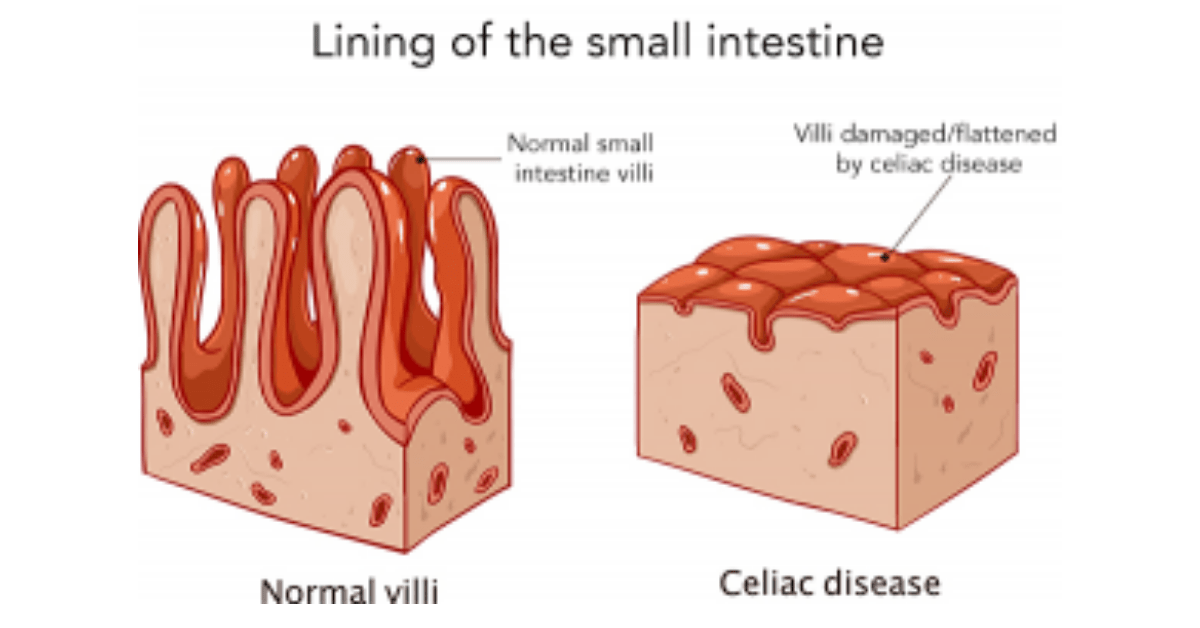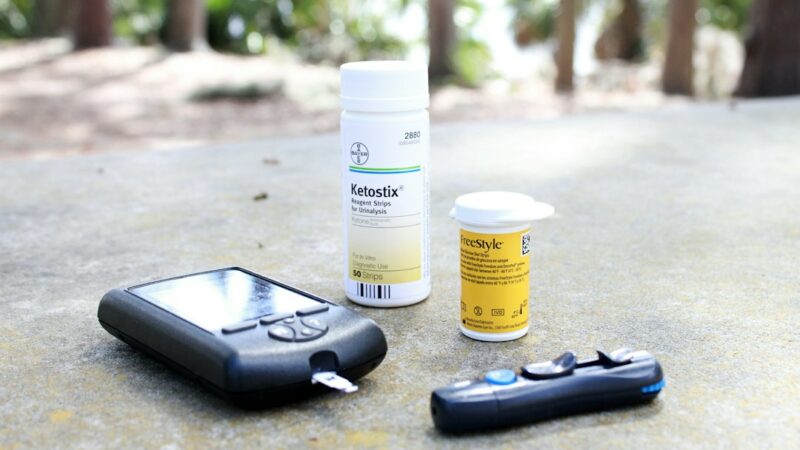Dermatitis Herpetiformis and Celiac Disease: Symptoms and Diagnosis

Dermatitis Herpetiformis (DH) and Celiac Disease are two related conditions that often go hand in hand. DH is a chronic skin condition characterized by itchy, blistering rashes, while Celiac Disease is an autoimmune disorder triggered by the ingestion of gluten. Both conditions are linked to an intolerance to gluten, a protein found in wheat, barley, and rye. Understanding the relationship between DH and Celiac Disease is crucial for proper diagnosis and management of these conditions.
Table of Contents
Key Takeaways
- Dermatitis Herpetiformis is a skin condition associated with Celiac Disease.
- The relationship between Dermatitis Herpetiformis and Celiac Disease is that they are both autoimmune disorders triggered by gluten.
- Symptoms of Dermatitis Herpetiformis and Celiac Disease include skin rash, digestive issues, and fatigue.
- Gluten plays a significant role in triggering Dermatitis Herpetiformis and Celiac Disease.
- Diagnosis of Dermatitis Herpetiformis and Celiac Disease involves blood tests, skin biopsy, and endoscopy.
What is Dermatitis Herpetiformis and Celiac Disease?
Dermatitis Herpetiformis is a chronic skin condition that causes itchy, blistering rashes. It is often referred to as the “celiac disease of the skin” because it is closely associated with Celiac Disease. The exact cause of DH is not fully understood, but it is believed to be an autoimmune reaction triggered by the ingestion of gluten. DH typically affects adults between the ages of 20 and 60, and it is more common in individuals of Northern European descent.
Celiac Disease, on the other hand, is an autoimmune disorder that affects the small intestine. It is triggered by the ingestion of gluten, which causes an immune response that damages the lining of the small intestine. This damage prevents the absorption of nutrients from food, leading to a wide range of symptoms and complications. Celiac Disease can develop at any age and affects individuals of all ethnic backgrounds.
While DH and Celiac Disease are distinct conditions, they are closely related and share many similarities. Both conditions are triggered by an intolerance to gluten and can cause a range of symptoms throughout the body. However, DH primarily affects the skin, while Celiac Disease primarily affects the digestive system.
Understanding the Relationship between Dermatitis Herpetiformis and Celiac Disease
Dermatitis Herpetiformis is considered a cutaneous manifestation of Celiac Disease. This means that individuals with DH also have Celiac Disease, even if they do not exhibit the typical gastrointestinal symptoms associated with the condition. The connection between DH and Celiac Disease lies in the immune system’s response to gluten. In both conditions, the immune system mistakenly identifies gluten as a threat and launches an immune response, leading to inflammation and tissue damage.
The role of gluten in both DH and Celiac Disease is crucial. Gluten is a protein found in wheat, barley, and rye, and it is responsible for the elastic texture of dough. In individuals with DH and Celiac Disease, gluten triggers an immune response that damages the body’s own tissues. In DH, this immune response primarily affects the skin, leading to the characteristic blistering rashes. In Celiac Disease, the immune response primarily affects the small intestine, leading to inflammation and damage to the lining of the gut.
The connection between the gut and skin in Dermatitis Herpetiformis is not fully understood, but it is believed that the immune response triggered by gluten in the gut also affects the skin. It is thought that antibodies produced in response to gluten travel through the bloodstream and accumulate in the skin, causing inflammation and blistering. This explains why a gluten-free diet is effective in managing both DH and Celiac Disease.
Symptoms of Dermatitis Herpetiformis and Celiac Disease
Dermatitis Herpetiformis is characterized by itchy, blistering rashes that typically appear on the elbows, knees, buttocks, and scalp. The rash is usually symmetrical and may come and go in cycles. Other common symptoms of DH include burning or stinging sensations in the affected areas, as well as redness and swelling. It is important to note that not all individuals with DH experience gastrointestinal symptoms commonly associated with Celiac Disease.
Celiac Disease can cause a wide range of symptoms throughout the body. Common gastrointestinal symptoms include diarrhea, abdominal pain, bloating, and weight loss. However, Celiac Disease can also cause non-gastrointestinal symptoms, such as fatigue, joint pain, headaches, and skin rashes. These non-gastrointestinal symptoms can sometimes be the only indication of Celiac Disease in individuals with DH.
While both DH and Celiac Disease are triggered by an intolerance to gluten, the symptoms may differ between the two conditions. DH primarily affects the skin and is characterized by itchy, blistering rashes. In contrast, Celiac Disease primarily affects the digestive system and can cause a wide range of gastrointestinal symptoms. However, it is important to note that individuals with DH may also experience gastrointestinal symptoms, and individuals with Celiac Disease may also experience skin rashes.
The Role of Gluten in Dermatitis Herpetiformis and Celiac Disease
Gluten plays a central role in both Dermatitis Herpetiformis and Celiac Disease. In individuals with DH, gluten triggers an immune response that leads to inflammation and tissue damage in the skin. This immune response is mediated by antibodies called immunoglobulin A (IgA) deposits, which accumulate in the skin and cause the characteristic blistering rashes.
In Celiac Disease, gluten triggers an immune response that primarily affects the small intestine. The immune system mistakenly identifies gluten as a threat and launches an immune response, leading to inflammation and damage to the lining of the gut. This damage prevents the absorption of nutrients from food, leading to a wide range of symptoms and complications.
A gluten-free diet is the cornerstone of treatment for both DH and Celiac Disease. By eliminating gluten from the diet, individuals with these conditions can prevent further damage to their bodies and manage their symptoms effectively. It is important for individuals with DH or Celiac Disease to carefully read food labels and avoid foods that contain gluten or may be cross-contaminated with gluten.
How is Dermatitis Herpetiformis and Celiac Disease Diagnosed?

Dermatitis Herpetiformis is typically diagnosed through a combination of clinical evaluation, skin biopsy, and blood tests. A dermatologist will examine the characteristic blistering rashes and may perform a skin biopsy to confirm the diagnosis. Blood tests can also be helpful in diagnosing DH, as they can detect the presence of specific antibodies associated with the condition.
Celiac Disease is typically diagnosed through a combination of blood tests and an intestinal biopsy. Blood tests can detect the presence of specific antibodies associated with Celiac Disease, such as anti-tissue transglutaminase (tTG) antibodies and anti-endomysial (EMA) antibodies. If these blood tests are positive, an intestinal biopsy may be performed to confirm the diagnosis. During an intestinal biopsy, a small sample of tissue is taken from the small intestine and examined under a microscope for signs of damage.
Accurate diagnosis is crucial for proper treatment and management of both DH and Celiac Disease. It is important for individuals with symptoms suggestive of these conditions to seek medical attention and undergo appropriate diagnostic testing. Self-diagnosis or self-treatment without medical supervision can lead to delays in diagnosis and potentially serious complications.
Dermatitis Herpetiformis and Celiac Disease: Who is at Risk?
Both Dermatitis Herpetiformis and Celiac Disease have a strong genetic component. Individuals with a family history of either condition are at an increased risk of developing DH or Celiac Disease themselves. The exact genes involved in these conditions are not fully understood, but certain variants of the human leukocyte antigen (HLA) genes have been associated with an increased risk.
Other risk factors for Dermatitis Herpetiformis and Celiac Disease include gender and age. DH is more common in males than females, while Celiac Disease is more common in females than males. Both conditions can develop at any age, but they are more commonly diagnosed in adulthood.
Complications Associated with Dermatitis Herpetiformis and Celiac Disease
Dermatitis Herpetiformis and Celiac Disease can both lead to a range of complications if left untreated. In DH, the constant itching and scratching of the skin can lead to secondary infections and scarring. In severe cases, DH can also cause significant discomfort and affect an individual’s quality of life.
Celiac Disease, if left untreated, can lead to long-term complications such as malnutrition, osteoporosis, infertility, and an increased risk of certain types of cancer. The damage to the small intestine prevents the absorption of nutrients from food, leading to deficiencies in essential vitamins and minerals. Over time, this can result in a wide range of health problems.
Early diagnosis and treatment are crucial for preventing complications associated with both DH and Celiac Disease. It is important for individuals with symptoms suggestive of these conditions to seek medical attention and undergo appropriate diagnostic testing.
Treatment Options for Dermatitis Herpetiformis and Celiac Disease
The primary treatment for Dermatitis Herpetiformis is a gluten-free diet. By eliminating gluten from the diet, individuals with DH can prevent further damage to their skin and manage their symptoms effectively. In addition to a gluten-free diet, medications such as dapsone may be prescribed to control itching and inflammation.
For Celiac Disease, the primary treatment is also a strict gluten-free diet. By eliminating gluten from the diet, individuals with Celiac Disease can prevent further damage to their small intestine and manage their symptoms effectively. It is important for individuals with Celiac Disease to work closely with a healthcare professional or registered dietitian to ensure they are following a balanced and nutritious gluten-free diet.
In some cases, individuals with Celiac Disease may also need to take vitamin and mineral supplements to address any deficiencies caused by malabsorption. In severe cases, corticosteroids or other medications may be prescribed to reduce inflammation and promote healing in the small intestine.
Living with Dermatitis Herpetiformis and Celiac Disease: Coping Strategies and Lifestyle Changes
Living with Dermatitis Herpetiformis and Celiac Disease can be challenging, but there are strategies and lifestyle changes that can help individuals manage their symptoms and improve their quality of life. Some coping strategies for managing DH and Celiac Disease include:
– Following a strict gluten-free diet: This is the most important aspect of managing both conditions. It is important to carefully read food labels and avoid foods that contain gluten or may be cross-contaminated with gluten.
– Seeking support: Connecting with others who have DH or Celiac Disease can provide valuable support and information. Support groups, both online and in-person, can be a great resource for individuals living with these conditions.
– Managing stress: Stress can exacerbate symptoms of DH and Celiac Disease. Finding healthy ways to manage stress, such as through exercise, meditation, or therapy, can help improve overall well-being.
– Taking care of the skin: Proper skincare is important for individuals with DH. This may include using gentle cleansers, moisturizers, and avoiding harsh chemicals or irritants.
– Planning ahead: When dining out or traveling, it is important to plan ahead and ensure that gluten-free options are available. Bringing gluten-free snacks or meals when necessary can help prevent accidental exposure to gluten.
Research and Future Directions for Dermatitis Herpetiformis and Celiac Disease
There is ongoing research on both Dermatitis Herpetiformis and Celiac Disease to better understand these conditions and develop new treatment options. Current research focuses on identifying the specific genes involved in these conditions, as well as understanding the mechanisms behind the immune response to gluten.
Potential future treatments for DH and Celiac Disease include targeted therapies that can suppress the immune response to gluten without the need for a strict gluten-free diet. Researchers are also exploring the use of probiotics and other dietary interventions to manage symptoms and promote gut health in individuals with Celiac Disease.
Dermatitis Herpetiformis and Celiac Disease are two related conditions that are closely linked to an intolerance to gluten. Understanding the relationship between these conditions is crucial for proper diagnosis and management. Both DH and Celiac Disease can cause a range of symptoms throughout the body, and early diagnosis and treatment are important for preventing complications. A gluten-free diet is the cornerstone of treatment for both conditions, and individuals with DH or Celiac Disease should work closely with healthcare professionals to ensure they are following a balanced and nutritious diet. By seeking medical attention and following a gluten-free diet, individuals with DH and Celiac Disease can effectively manage their symptoms and improve their quality of life.
If you’re interested in learning more about Dermatitis Herpetiformis and Celiac Disease, you may also want to check out this informative article on “What is Celiac Disease: Types, Causes, and Diagnosis” from TurnToBeHealthy.com. This article provides a comprehensive overview of Celiac Disease, including its different types, common causes, and the diagnostic process. Understanding the connection between Dermatitis Herpetiformis and Celiac Disease can help individuals recognize the symptoms and seek appropriate medical attention. To read more about it, click here.
FAQs
What is Dermatitis Herpetiformis?
Dermatitis Herpetiformis is a chronic skin condition that is associated with gluten sensitivity. It is characterized by itchy, blistering skin rashes that typically occur on the elbows, knees, buttocks, and scalp.
What is Celiac Disease?
Celiac Disease is an autoimmune disorder that is triggered by the consumption of gluten. It causes damage to the small intestine and can lead to a range of symptoms, including abdominal pain, diarrhea, and weight loss.
What is the connection between Dermatitis Herpetiformis and Celiac Disease?
Dermatitis Herpetiformis is a skin manifestation of Celiac Disease. Both conditions are caused by an intolerance to gluten, and individuals with Dermatitis Herpetiformis often have underlying Celiac Disease.
What are the symptoms of Dermatitis Herpetiformis?
The symptoms of Dermatitis Herpetiformis include itchy, blistering skin rashes that typically occur on the elbows, knees, buttocks, and scalp. The rash may be accompanied by a burning or stinging sensation.
What are the symptoms of Celiac Disease?
The symptoms of Celiac Disease can vary widely, but may include abdominal pain, bloating, diarrhea, constipation, weight loss, fatigue, and anemia.
How is Dermatitis Herpetiformis diagnosed?
Dermatitis Herpetiformis is typically diagnosed through a skin biopsy, which involves removing a small sample of skin tissue for examination under a microscope. Blood tests may also be used to detect antibodies associated with Celiac Disease.
How is Celiac Disease diagnosed?
Celiac Disease is typically diagnosed through a combination of blood tests and a biopsy of the small intestine. Blood tests can detect antibodies associated with the condition, while a biopsy can confirm the presence of damage to the small intestine.






